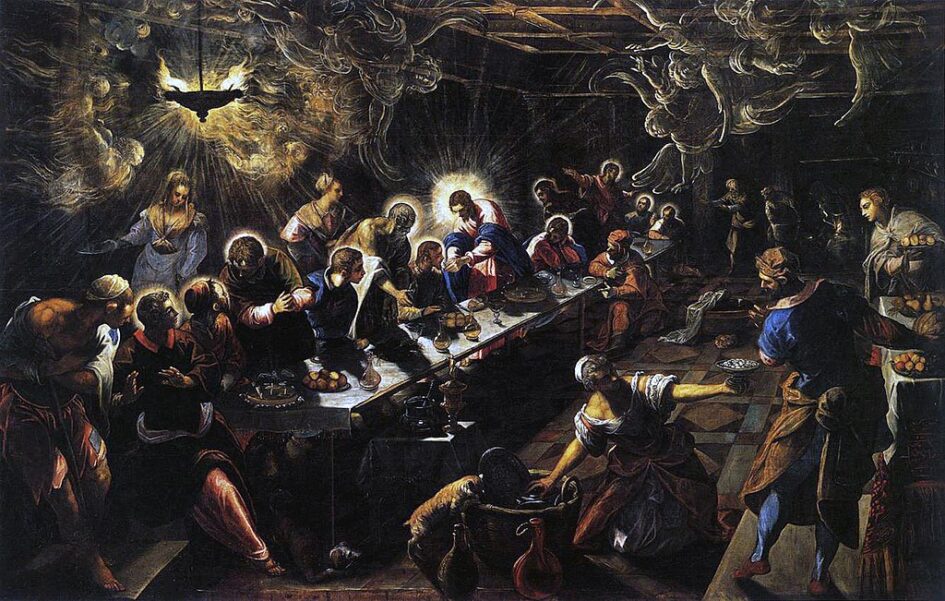Translations are not mere vessels for a story, and neither are translators their captains. Translators are creators in their own right, effectively composing a brand new, living text that merely reflects the ideas put forth by the original author. (Klaus Schubert, an expert in technical translation, makes this argument even for the translation of the driest, most technical documents.)
As a visual parallel, I think of the innumerable interpretations of the Last Supper. Each painting is a different experience, and some paintings speak to us more than others.




Or simply consider cover art: does Mary GrandPre’s interpretation of Harry Potter offer the same experience as Adrian Macho’s? How about Dan Schlesinger’s cover and book art?
For those of us who enjoy the artistry of translation, Harry Potter has a wide range of potential for translators’ expression. That’s why I’m introducing the Spellman Spectrum, which rates translations on a scale from literal (or source-oriented) translation to gist (target-oriented) translation.
The aim of the scale is to communicate the level of creativity and originality of a translation. A high score indicates that the translator has created a new experience for the reader. If you read Harry Potter in English and then reread it in a language with a high score, expect to enter a very different world from the one you knew in English! A low score indicates the translator’s loyalty to the original tale, meaning the translation is excellent for language learners who are still getting a grip on grammar, vocabulary, and idiomatic expression.
For comparison, the French translation by currently has a score of 89.7, while the Spanish translation has a score of 22.0. Reading Harry Potter in French is quite a joy, while reading it in Spanish is great language practice! In the middle falls the German translation, whose score of 58.2 reflects a balance between enjoyment and language practice.
How this model for comparing translations works…
The Spectrum is a work in progress. It will change over time through trial and error and as additional data is gathered. It is not scientific: subjective, quantitative models to compare translations do not exist, and most attempts toward developing scientific models are qualitative. But that’s nice, on the one hand, because that means the model we use can be tailored to fit the world of Harry Potter!
The model, in its basic conception, works like this:
Dozens of variables are compared across translations. Those variables include a range of samples, from names of people and magical objects to the use of sentence-level pragmatic devices. Each variable is assigned a numeric rating:
1: a literal translation
2: a translation that deviates slightly from the original English
3: a gist (target-oriented) translation; a reinterpretation that deviates significantly from the original English
The variables are weighted according to how complex the translation. Here are some of the general guidelines used to decide on variable weight:
- Names are very easy to alter, and receive the lowest weight.
- Sentence-level translations carry moderate weight when the English-language sentence includes a complex idiomatic structure.
- Culture-specific translations also carry moderate weight, but are rated with the translator’s application of the skopos principle in mind. (That is, keeping in mind whether the translator is attempting to portray a foreign wizarding world situated in Britain or a native wizarding world familiar to the country of the language.)
- Translations of idiomatic expressions (such as “thank you very much“) carry a moderate-to-high weight.
- The translation of language-based literary devices, such as puns, poems, play-on-words, carry heavy weight.
In some rare cases, a variable may receive extra weight in one language. This happens when a specific translator does something especially innovative, such as making an unexpected and unprompted connection to the target culture or creating connections within the story that were not present in the English source text.
Finally, because this calculation effectively restricts the range from 33%-100%, with the vast majority of translations following somewhere between 40%-70%, the scale applies an algorithm that stretches the median range so that it more broadly fills out the range of 1-100. Percentages on the extremities, 33-40% and 70-100%, have reduced ranges on the scale. This algorithm helps bring out the broad range in translation strategies applied in each translation so that the differences are easier to see.
Again, this non-scientific scale is a work in progress and I intend to fine tune it over time as I learn more. So be sure and check back every so often to see how the scores change!

1 Pingback